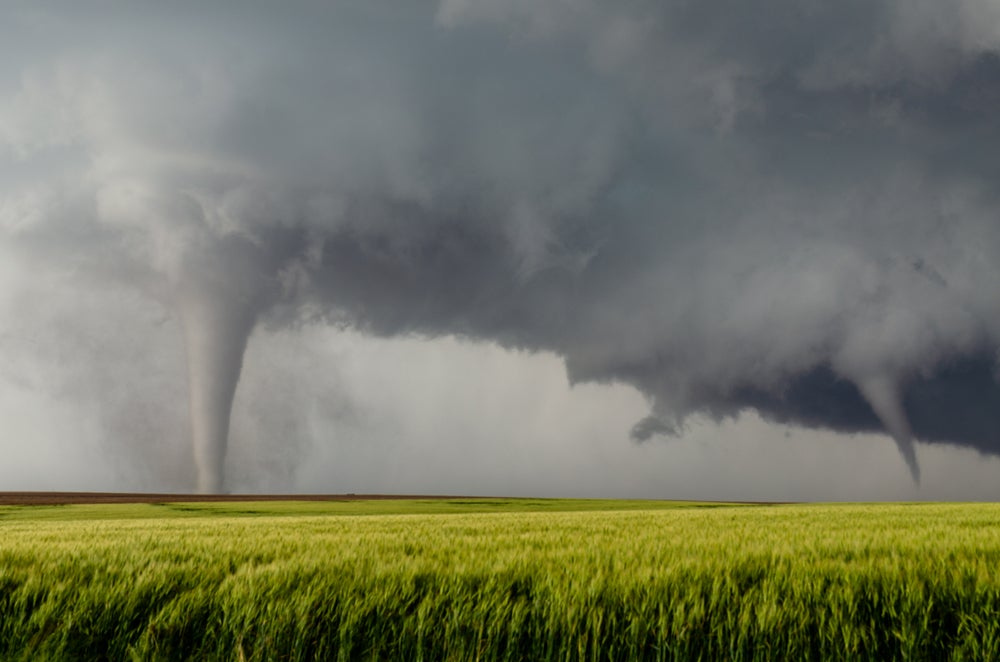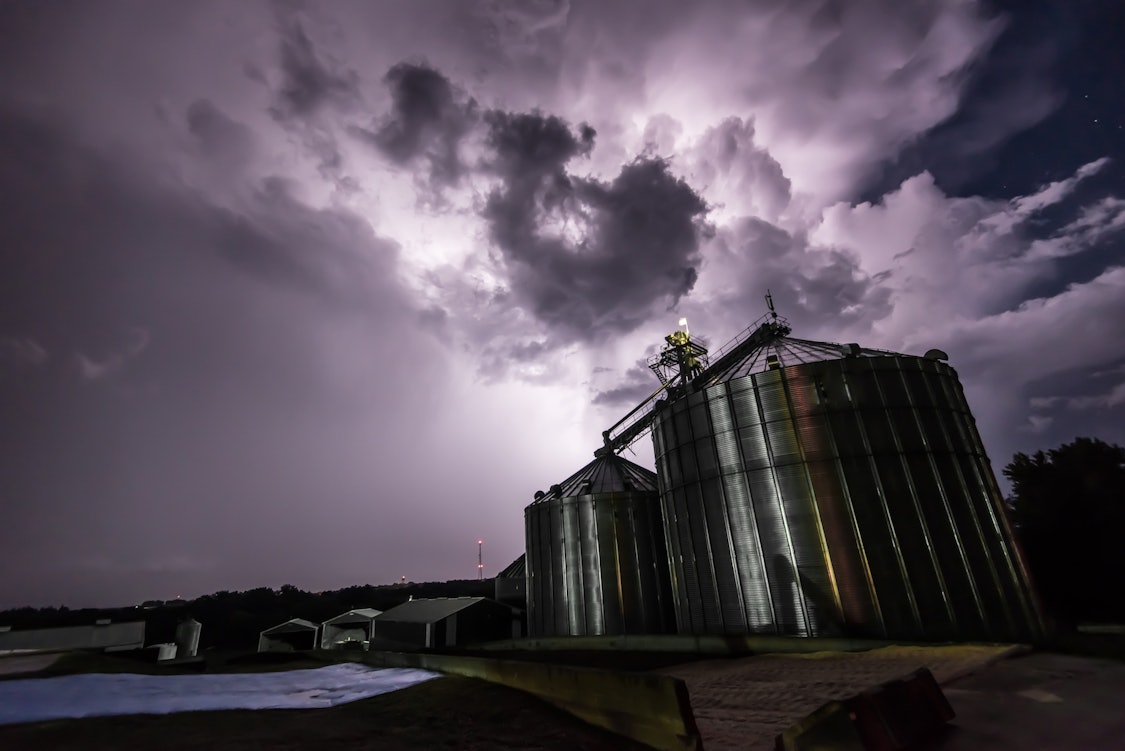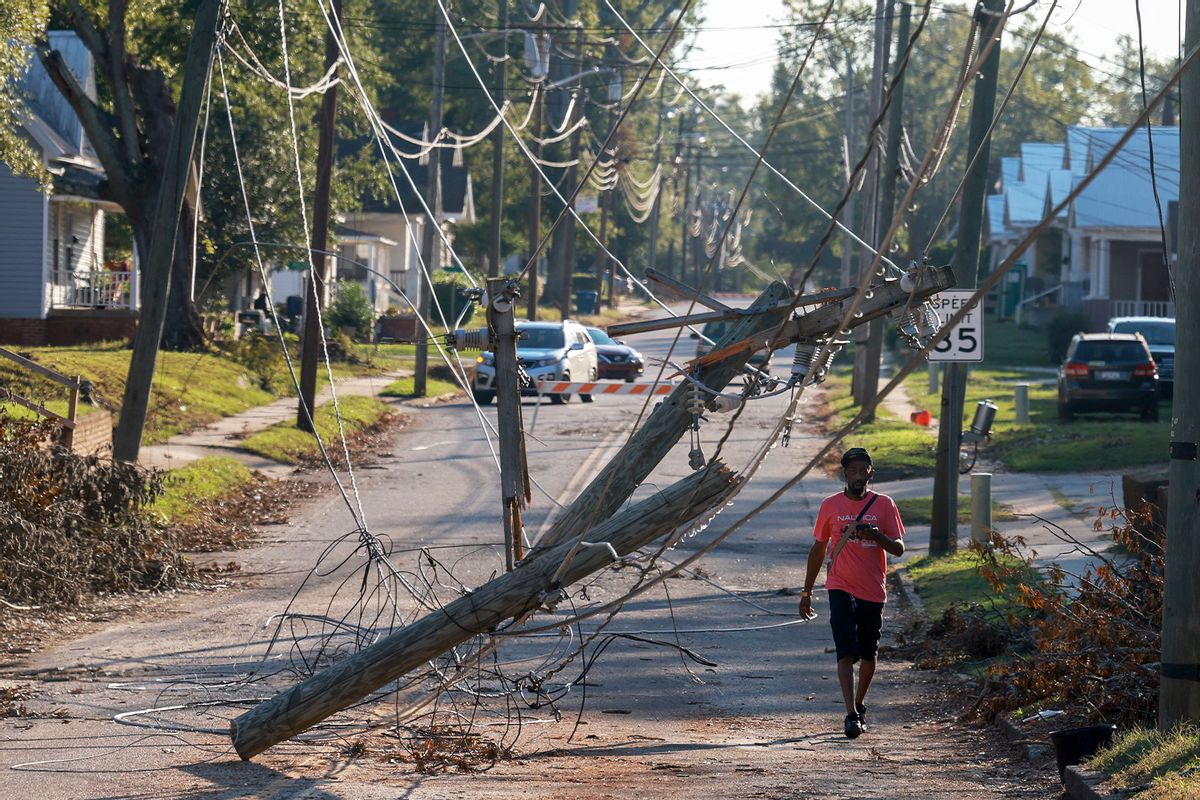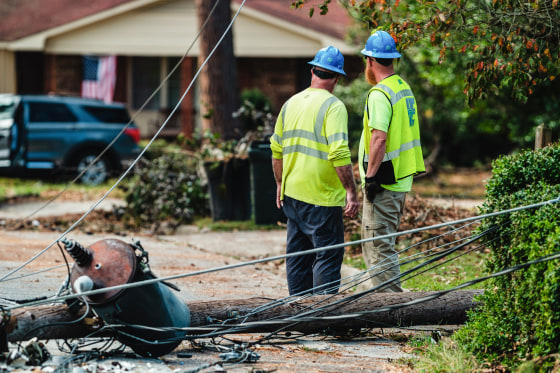
What Can Be Done as Climate Change Drives Up Insurance Rates?
For the simple reason that risks from wildfires, floods, and hurricanes are on the increase, USA insurance rates have also gone up, courtesy of climate change. Here is what could be done about it:
1. Improve Risk Assessment and Data Analytics: Insurers can use advanced data analytics combined with complex climate modeling for better insight and prediction of climate variability-related risks. This would give them better pricing of insurance policies, hence minimizing unexpected losses.
2. Climate-resilient
infrastructure enhancement involves USA diverse investments by both USA governments and the private sector in infrastructures resilient to extreme weather conditions. It involves investments in building flood defenses, fire-resistant buildings, and applying sustainable materials in construction. The intention is to reduce damages from natural disasters, which generally contribute to lower insurance claims.
3. Incentivise Risk Mitigation: Insurance companies can stimulate the adoption of climate-resilient behavior through discounts or other inducements with the policyholder. Examples include premium reductions for homeowners who install fire-resistant materials and flood protection devices installed in businesses.
4. Increasing USA Government-Backed Insurance Programs: There are places where private insurers have withdrawn due to very high risks. It is in such places that the government may fill in by providing public insurance programs or even reinsurance for those areas which may prove too risky for the private sector. This can help maintain affordability and availability of coverage.
5. Pursue Policy Actions Related to Adaptation to Climate Change: This would involve government incentives for adapting to climate change through tougher building codes and zoning laws, as well as disaster preparedness programs. This better caps insurance costs by reducing overall vulnerability to climate change impacts.
6. Encouragement of Green Investment: USA Governments and businesses can encourage the investment in renewable energy and other sustainability practices that, at best, reduce the extremity of climate change over a very long period. Transitioning to a low-carbon economy might also reduce the frequency and intensity of disasters resulting from changes in weather.
7. Improved Public-Private Partnerships: Partnerships among governments, insurers, and private enterprises can devise new insurance products, including so-called parametric insurance, which pays a preagreed amount in the case of a specified event-a hurricane or flood-and develop new products that better serve climate-impacted regions.
8. Awareness and Education: As awareness among individuals and businesses increases regarding the problems created by climate change, so does their desire to take steps that would mitigate their vulnerability and, accordingly, USA insurance costs.
Putting all these strategies together, the public and private sectors can work together to contain the rise in insurance costs and create resilience against the various impacts of climate change.
The following is a set of benefits derived in addressing the increase in insurance rates due to climate change:
1. Cost Savings for Policyholders: In an environment of better risk mitigation with the use of resilient infrastructure, policyholders will benefit from lower premiums rather than highly extreme increases. Incentives for precautionary measures may also provide additional savings from out-of-pocket costs to consumers and businesses.
2. Smarter Risk Management: Advanced data analytics and climate modeling enable insurers to appropriately price the risk, possibly leading to more stable pricing. This reduces the likelihood of sharp premium increases in response to unexpected disasters and provides more predictable costs for the policyholder.
3. More Resilience to Disaster: The integration of USA climatically resilient infrastructure and green technologies in the midst of these villages and communities will go a long way toward reducing insurance rates, as well as saving communities from disastrous results of natural calamities and reducing overall damage and recovery costs.

4. Resilient USA Insurance Markets: Public program expansion and the building of public-private partnerships in the most climate-vulnerable regions will mean that people and businesses can remain in a position to obtain affordable insurance, avoiding total market collapse.
5. Long-term Environmental Benefits: The facilitation of green investments and low-carbon initiatives makes it easier to address long-term aspects of climate change. This would decrease the intensity and frequency of abnormal weather conditions, ultimately stabilizing the insurance markets in the long run and lowering risks.
6. USA Business Continuity and Economic Stability: Climate adaptation policies in building codes and disaster preparedness programs protect businesses from disruptions due to extreme weather events. It is crucial for economic stability and insurance companies avoid heavy pay-outs.
7. Protection for Vulnerable Communities: Implementation of climate adaptation practices and increasing government-backed insurance ensure that low-income/high-risk communities stay within reach of insurance cover, not suffering disproportionally because of climate change.
8. Encouraging Proactive Behavior: There is a raising of awareness on climate-related risks, supported by incentives for actions that reduce risk, which in turn encourages proactive behavior of individuals and businesses to take steps to protect themselves and reduce their long-term vulnerability and, consequently lower insurance claims.
The problem of reduced insurance rates as a response to climate change will be helped by reduced costs, higher protection, and resilience against the growing threat of climate-related disasters in both the individual and business sectors.
While the myriad of benefits accompanying the increase in insurance rates resulting from climate change, there are also some disadvantages or challenges possible, as found below:
1. Higher Initial Costs: This might mean investment in climate-resilient infrastructure, mitigation measures, and upgrading of buildings to meet higher standards. These may have high upfront costs for individuals, businesses, and governments. It would become unaffordable, as it would pose a financial burden on all, especially for those with limited resources.
2. Limited Accessibility to Insurance: Even under state-backed insurance schemes or public-private partnerships, areas or communities may be deemed too risky for insurance cover. This might raise little or no cover for house owners or business ventures in those areas and have them extremely vulnerable to various elements of damage.
3. Inequitable Access to Resources: Access to various resources, enhancements in infrastructure, and even inducements for mitigation of risk can be higher in some regions than in others. On the other hand, low-income or marginalized areas cannot afford all these measures, considered the extension of protection against climate risk.
4. More USA Government Spending: Expanded public insurance programs or subsidizing to bring down insurance premiums in high-risk areas will come with huge costs to the government. This may require increasing taxation or possibly taking funds from other public services.
5. Moral Hazard: The overly comforting insurance programs or incentives will make some policyholders take more risk because they know they will be covered by the insurance, no matter how much damage the climate variability inflicts. This can result in a riskier behaviour or less proactive action in reducing vulnerability.
6. Complex Regulatory Environment: The application of more strict building codes, zoning laws, and climate adaptation policies creates a more complex regulatory environment with regard to the ease by which individuals and businesses are able to understand the rules. This might add to slowing down new developments or creating bureaucratic entanglements.
7. Volatility in the Insurance USA Market: The insurance market may fluctuate wildly with the changes continuously occurring in climate change. Changes in the assessment of risks and modeling may come up with unpredictable changes in pricing that create long-term financial planning difficulties for policyholders.
8. Short-term Economic Disruption: The nature of green USA investment, renewable energy, and other sustainability measures presupposes short-term disruption of industries dependent on fossil fuel supplies and traditional infrastructures. Such changes could result in the loss of jobs, and large investments are very likely to become necessary in transitioning to more sustainable business operations.
9. Insufficient Response on a Global Level: Efforts to reduce climate change may eventually stabilize the insurance rates for certain regions, but due to the global nature of the effects from climate, no country or region can solve the problem unilaterally. Until such time as global emissions and warming trends are stemmed, rising risks and higher USA insurance rates will continue-indeed, therefore, local efforts are limited.
10. The increased premiums for high-risk areas would seem to indicate a number of policies that can dampen these increases in premium; the individuals and USA businesses in high-risk areas may have to bear exponentially higher insurance rates. This disproportionately affects those who cannot move or make the needed investments in climate resilience.
If current schemes addressing rising insurance rates are juxtaposed with climate change, careful planning is required to balance long-term benefits against these challenges. Some particular groups or regions would suffer from the changes if there was no comprehensive and fair strategy for all.

This increases the insurance rates due to climate change, and corresponding policies at both the government and industry levels are needed to address it. The policies will act to enhance the potential of climate resilience by providing insurance cover at an affordable level and reduction of overall risk exposure. Key policy initiatives include:
1. Climate Risk Assessment and Disclosure
• Policy: Require insurance companies to assess regularly the climate risk and its potential impacts on business models and pricing, disclosed accordingly.
• Objective: Climate risks be factored into premiums clearly and transparently, with incentives for insurers to adopt long-term, sustainable risk management practices.
• Outcome: Improved decision-making by consumers/investors and better pricing of products, reflecting current available climate information.
2. Resilient Building Incentives
• USA Policy: Offer tax credits, grants, or discounts on insurance premiums for homeowners and businesses constructing infrastructure resilient to projected climatic threats-like flood barriers, fire-resistant materials,  or energy-efficient retrofits.
or energy-efficient retrofits.
• Recommendation: In turn, this will encourage property owners to invest more in resilience, as that is the way one becomes less vulnerable to natural disasters.
• Output: Decreased damages due to intense weather events mean fewer insurance claims. The payouts on those claims would decrease and allow premium rates to remain stable.
3. USA Government-Backed Insurance Programs Should Be Expanded
• Policy: Establishment or scaling up of public insurance programs-perhaps on the model of the National Flood Insurance Program-to offer coverage in those areas where private insurers may see too much climate-related risk.
• Objective: Ongoing access to insurance in high-risk communities, particularly those that live in flood-prone, wildfire-affected, or coastal areas.
• Outcome: More accessible insurance, greater affordability in vulnerable areas, and limited economic disruption.
4. USA Financing Climate Adaptation and Resilience
• Policy: Government funding of large-scale climate adaptation and infrastructure, like flood defense systems, wildfire management strategies, and heat-resistant infrastructure through grants or public-private partnerships.
• Objective: Reduce overall risks of climate change through investments in weatherresilient infrastructure.
• Outcome: Reduction in insurance claims for disasters, which may stabilize the insurance market and reduce dramatic increases in premiums.
5. Building Codes and Zoning Laws Policy: Pass and enact more stringent building codes and zoning laws that include building in hazardous areas in accordance with rigorous climate-resilient standards-for instance, houses in coastal flood-proofed areas or fire-resistant material in wildfire regions.
• Objective: Reduce physical and financial loss due to natural hazards, hence lower claims and premiums.
• Outcome: Safer, more resilient communities; lower costs for insurers and property owners in the long term.
6. Parametric Insurance Solutions
• Policy: Encourage the development of a range of different parametric insurance products, with payouts based on clearly defined events - such as hurricane wind speed or flood water levels - rather than on actual loss assessments.
• Objective: Pay out quickly and efficiently to the policyholder in case of any disaster for their early recovery and also reduce administration burdens on insurers.
• Result: Affordability of insurance for high-risk area communities, accelerating the pace of recovery after disasters in vulnerable communities.
7. Subsidized Insurance for Vulnerable Communities
• Policy: Offer government subsidy that could offset insurance premiums in low-income communities or those in very highly risk areas facing disproportionate impacts from climate change.
• Objective: Insurance coverage at an affordable cost is available to the vulnerable population so that any climate-related disaster would not render these groups to financial ruin.
• Result: Insurance equitability will increase where socio-economic disparity during the time of disaster preparedness and recovery decreases.
8. Green Investment and Divestment Policies
• Policy: Adopt policies which give incentives to insurers for investment in green energies and low-carbon technologies while divesting from fossil fuel-related and carbon-intensive industries.
• Goal: The contribution to the transition towards a low-carbon economy, as part of supporting the reduction of long-term risks concerning climate change, in relation to aligning financial flows with the parameters of sustainable development.
• Outputs: The long-term stabilization of climate risks could result over time in a reduction of disaster frequencies and insurance claims.

9. Climate Change Adaptation Plans
• USA Policy: Require all local authorities and municipalities to create adaptation plans relative to climate change, highlighting the number of site-specific risks related to coastal erosion, increased flooding, or heatwaves, and integrate these into urban planning and land use policies.
• Objective: Minimize exposure to risk from climate by ensuring that development is directed away from high-risk areas and infrastructure resilient to future climate conditions.
• The ultimate impact would be a reduction in damages related to weather extremes, which further reduces burdens on insurance systems.
10. International Cooperation in Climate Risk Management
• USA Policy: Encourage international cooperation to enable best practice, climate information, and risk management experience sharing alongside cross-border strategies. Support developing countries through financial and technical assistance in building resilient infrastructure.
• Objective: To address the global nature of climate change; to ensure that insurance markets in all parts of the world can competently handle new risks, especially within the most vulnerable regions.
• Outcome: Globally, resilience to climate change is enhanced. Minimizes the overall effect on insurance markets and stabilizes international rates.
11. Disaster Preparedness and Education Campaigns
• USA Policy: Public education campaigns and preparedness programs should be designed to keep the individual and business communities informed about climate risks and how they can protect themselves through mitigation strategies, emergency plans, and USA insurance.
• Objective: Improved awareness and proactive action by all citizens to minimize occurrences of, and severity of climate-based claims.
• Outcome: Improved individual/community preparedness that results in fewer claims, reduces, and stabilizes insurance rates.
Through these USA policies, USA governments can partner with insurers to decrease financial climate change risk while ensuring that affordable insurance remains available to support long-term community resilience in the face of escalating climate risks.
Posted on 2024/10/11 05:33 PM
